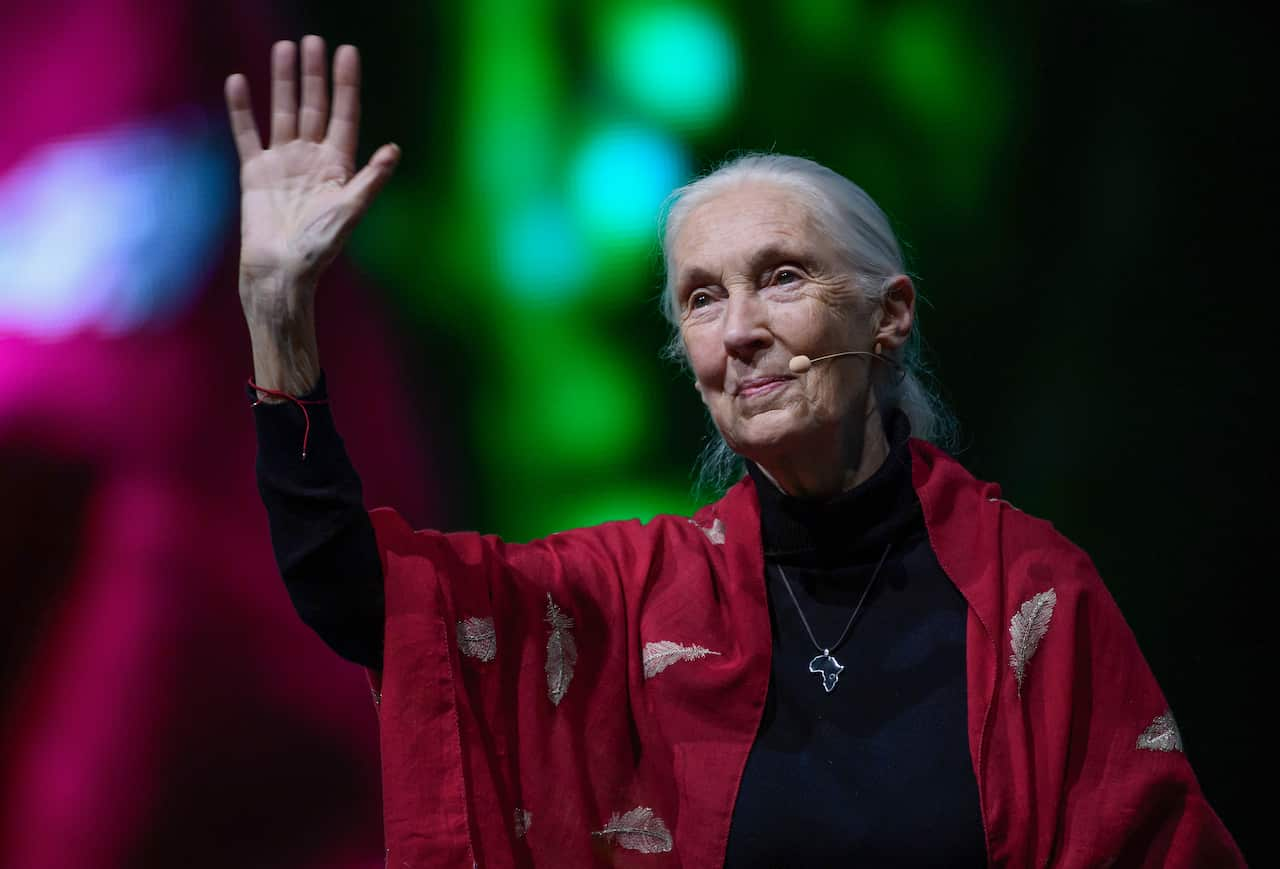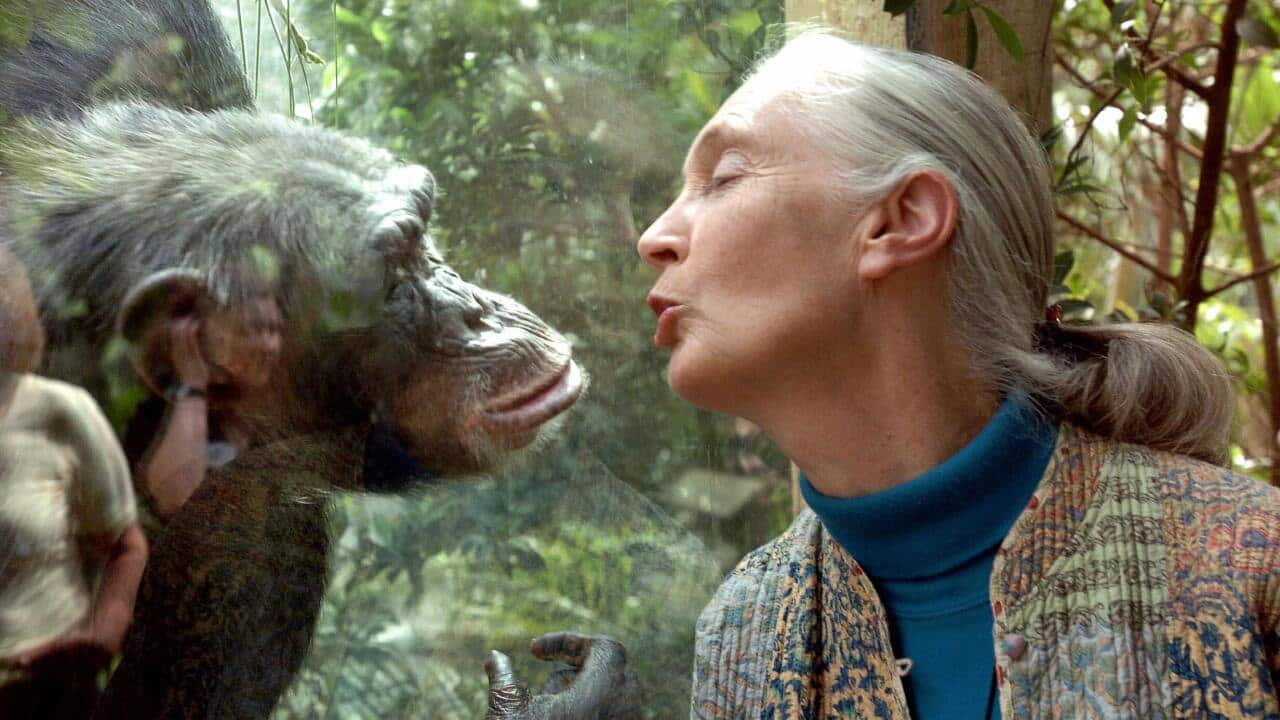Key Points
- Goodall made pioneering developments in wildlife research, inviting the public to appreciate her beloved chimpanzees.
- After witnessing widespread habitat devastation, she built a global movement for wildlife and climate action.
- The institute Goodall founded said she died from natural causes while in California on a speaking tour.
Scientist and global activist Jane Goodall, who turned her childhood love of primates into a lifelong quest for protecting the environment, has died at the age of 91.
Goodall died of natural causes while in California on a speaking tour, the Jane Goodall Institute said in a social media post on Thursday morning AEST.
"Dr. Goodall's discoveries as an ethologist revolutionized science, and she was a tireless advocate for the protection and restoration of our natural world," it said on Instagram.
The primatologist-turned-conservationist spun her love of wildlife into a lifelong campaign that took her from a seaside English village to Africa and then across the globe in a quest to better understand chimpanzees, as well as the role that humans play in safeguarding their habitat and the planet's health overall.
Goodall was a pioneer in her field, both as a female scientist in the 1960s and for her work studying the behaviour of primates.
She upended scientific norms of the time, giving chimpanzees names instead of numbers, observing their distinct personalities, and incorporating their family relationships and emotions into her work. She also found that, like humans, they use tools.
As her career evolved, she shifted her focus from primatology to climate advocacy after witnessing widespread habitat devastation, urging the world to take quick and urgent action on climate change.
"We're forgetting that we're part of the natural world," she told CNN in 2020. "There's still a window of time."

Jane Goodall published more than 30 books on primates, including her 1999 bestseller Reason For Hope: A Spiritual Journey, as well as a dozen aimed at children. Source: Getty / Sven Hoppe
She set her dreams aside after leaving school, unable to afford university. She worked as a secretary and then for a film company until a friend's invitation to visit Kenya put the jungle — and its inhabitants— within reach.
After saving up money for the journey, by boat, Goodall arrived in the East African nation in 1957. There, an encounter with famed anthropologist and paleontologist Louis Leakey and his wife, archaeologist Mary Leakey, set her on course to work with primates.
Under Leakey, Goodall set up the Gombe Stream Chimpanzee Reserve, later renamed the Gombe Stream Research Centre, near Lake Tanganyika in present-day Tanzania. There she discovered chimpanzees ate meat, fought fierce wars, and perhaps most importantly, fashioned tools in order to eat termites.
Although she eventually paused her research to earn a PhD at Cambridge University, Goodall remained in the jungle for years.
She also drew the public into the wild, partnering with the National Geographic Society to bring her beloved chimps into their lives through film, TV and magazines.
Nearly thirty years after first arriving in Africa, however, Goodall said she realised she could not support or protect the chimpanzees without addressing the dire disappearance of their habitat.
In 1977, she set up the Jane Goodall Institute, a nonprofit organisation aimed at supporting the research in Gombe as well as conservation and development efforts across Africa. Its work has since expanded worldwide and includes efforts to tackle environmental education, health and advocacy.
She later expanded the institute to include Roots & Shoots, a conservation program aimed at children.
A prolific author, she published more than 30 books with her observations, including her 1999 bestseller Reason For Hope: A Spiritual Journey, as well as a dozen aimed at children.
Goodall said she never doubted the planet's resilience or human ability to overcome environmental challenges.
"Yes, there is hope ... It's in our hands, it's in your hands and my hands and those of our children. It's really up to us," she said in 2002, urging people to "leave the lightest possible ecological footprints”.
Share


